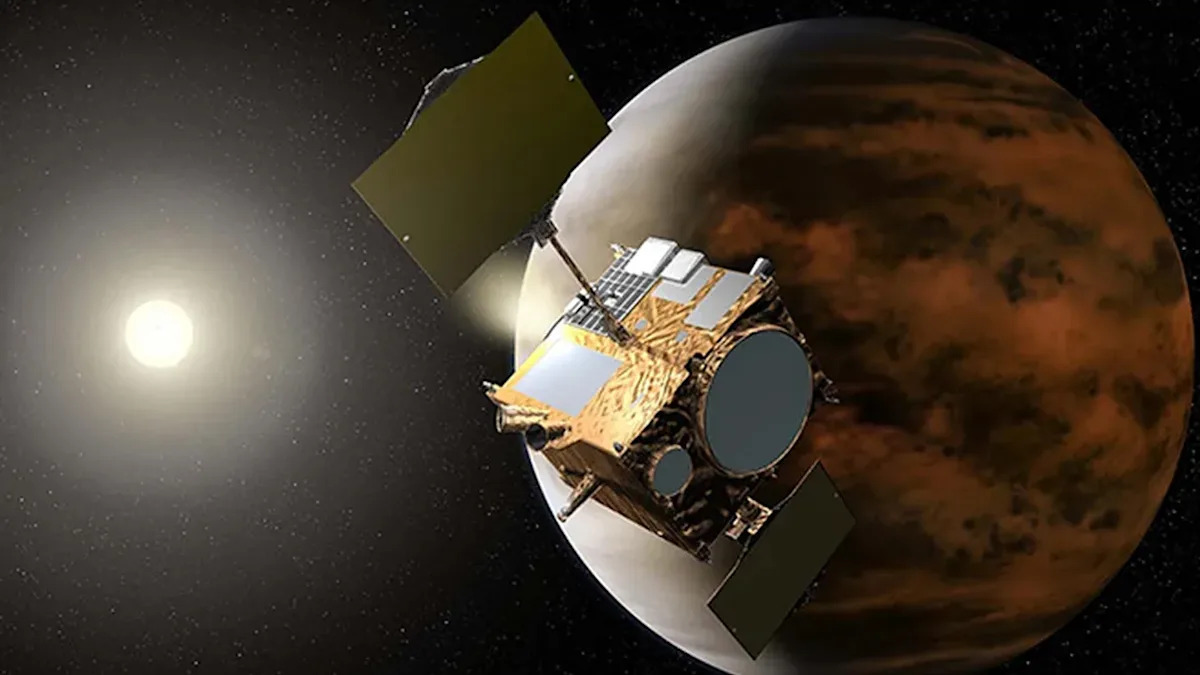After a year of attempting contact, the Japanese Aerospace Exploration Agency (JAXA) announced Tuesday that its Akatsuki Venus climate orbiter spacecraft has died and is no longer responsive. This was the last active human-made presence within Venus’ orbit, meaning that for the time being, Venus is all alone.
Considering it was only a year ago that it seemed we might have found life there, that seems like a real tragedy.
“This was a mission that changed our view of our Earth-sized neighbor, and laid the path for new discoveries about what it takes to become heaven or hell,” JAXA officials said (via Space.com).
His reference to biblical hellscapes is perhaps well put. Venus’ surface is notoriously inhospitable, featuring incredibly high temperatures, atmospheric clouds of sulfuric acid, and a toxic atmosphere that is about as far from Earth’s lush and temperate climate as you can get.

Venus from a distance.
Credit: NASA
Throughout its mission, the Akatsuki craft supplied data that informed over 170 scientific papers and lasted far longer than its original 4.5-year planned lifespan. It ultimately conducted its mission over the span of 13 years. It launched in 2010, missed its original Venus insertion window, and then came back five years later, managing to grab hold of the planet’s gravity enough to complete a range of exciting experiments.
“With the main rocket engine damaged, the team were forced to get creative,” JAXA wrote in the statement. “The spacecraft would have to attempt capture using the less powerful thrusters that were designed for the tasks of attitude control and fine adjustments. Orbit insertion had never previously been achieved with such a method, but exploration has always been about redefining the impossible.”
Learning more about Venus will require new Venus missions, and there are a couple in the pipeline. NASA has the DAVINCI and VERITAS missions, which will head into Venus’ atmosphere and scan its surface and interior, respectively. However, these missions are both under threat from the Trump administration’s NASA budget cuts, along with a Mars sample return mission.

